Activism and Social Change
Activism and Social Change was the theme for LGBTQ+ History Month 2025, celebrated in February. We’ve highlighted two of our blue plaque recipients who have fought for social change in very different, but equally important ways: Derek Jarman – the gay rights activist who campaigned for the repeal of section 28 of the Local Government Bill (1987) which banned local authorities from ‘promoting homosexuality’; and Goldsworthy Lowes Dickinson, who advocated for peace during the First World War.
You can also explore our LGBTQ+ history timeline which highlights some of the key moments, people and groups from England's LGBTQ+ past. You will find moments of repression, resistance, activism, love and celebration.
-

Derek Jarman
Derek Jarman was a film-maker, artist and gay rights activist who became a major cultural figure in the late 1980s. Read more about his career and activism here.
-

Goldsworthy Lowes Dickinson
Goldsworthy Lowes Dickinson was a peace activist whose work led to the foundation of the League of Nations and the emergence of the discipline of international relations.
-

LGBTQ+ Timeline
In this timeline you can explore some key events and figures from England’s LGBTQ+ past, offering you intriguing glimpses of how much more there is to explore.
Stories of England’s LGBTQ+ Past
-

Emperor Hadrian
Read more about Emperor Hadrian who ruled the Roman Empire from AD 117–138. He was known to have both male and female lovers, though the Romans did not define sexuality in such terms as ‘bi-sexual’ or ‘homosexual’.
-

James I and George Villiers
George Villiers, later the Duke of Buckingham, became a favourite of King James I after their first meeting at Apethorpe in 1614. Read about James and George and the surviving love letters which are telling of their close relationship.
-

A Cross-Dressing Medieval Spy at Kenilworth Castle
Discover the story of Margoth, Henry III’s cross-dressing female spy, and what light it sheds on both cross-dressing and espionage in medieval England.
-
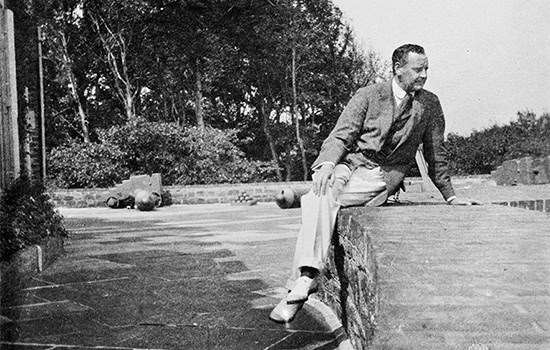
Lord Beauchamp and Walmer Castle
Public exposure of Lord Beauchamp's sexuality led to a dramatic fall from grace in the 1930s. Read more about the man whose misfortunes inspired Evelyn Waugh’s Brideshead Revisited.
-
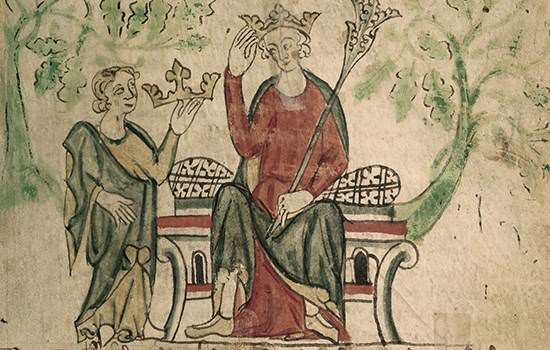
Piers Gaveston, Hugh Despenser and the Downfall of Edward II
Discover how Edward II’s reliance on his ‘favourites’ and possible lovers, Piers Gaveston and Hugh Despenser, led to his abdication and death.
-

Sir Walter Hungerford and the 'Buggery Act'
Find out how Sir Walter Hungerford, owner of Farleigh Hungerford Castle, came to be the first man in England to be executed under the ‘Buggery Act’.
-
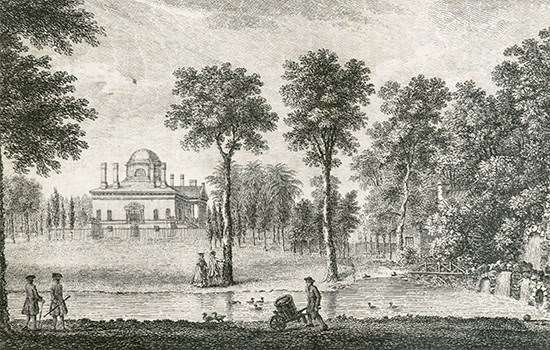
‘Romantic Female Friendship’ and Chiswick House
Explore the life of Georgiana, Duchess of Devonshire, and the fashion for ‘romantic female friendships’ in 18th-century England.
-
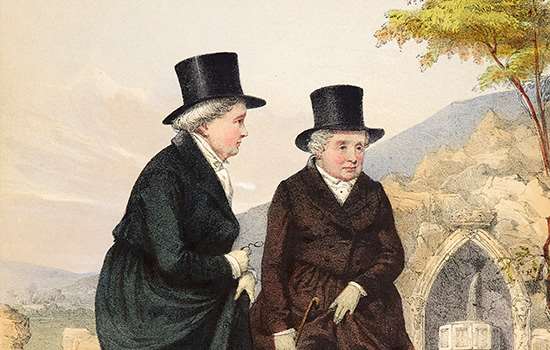
The Ladies of Llangollen
The lifestyle and relationship of Lady Eleanor Butler (1739–1829) and Sarah Ponsonby (1755–1831) became part of contemporary mythology and have remained subjects of fascination ever since.
-
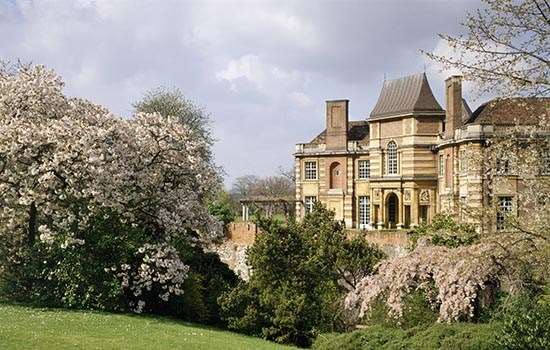
The Partners: Seely and Paget
Discover the story of John Seely and Paul Paget, partners both in life and in an archictecture practice, whose masterpiece was their transformation of medieval Eltham Palace into an art deco home in the 1930s.
-
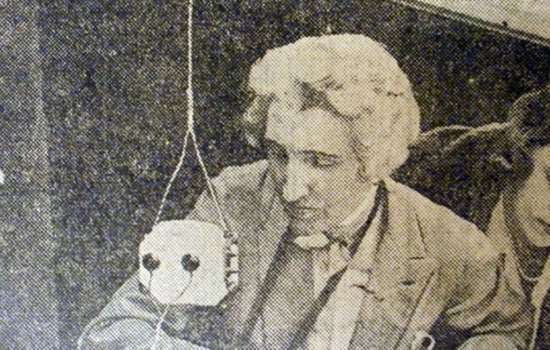
Gwen Lally and the Battle Abbey Pageant
Gwen Lally directed a cast of thousands at the Battle Abbey historical pageant in 1932. Find out more about the pageant and its unconventional pageant master.
-

England’s Rulers and their ‘Favourites’
We explore LGBTQ+ history and the private lives of four rulers who had same-sex relationships with their ‘favourites’.
-
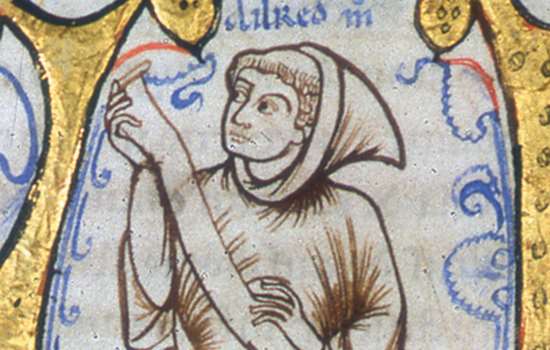
Aelred of Rievaulx
Read about the life of the 12th-century abbot of Rievaulx Abbey whose writings have become a source of inspiration for LGBTQ+ Christians.
-

The Galli: Breaking Roman Gender Norms
Discover how these Roman priests with ambiguous gender identities were viewed by their contemporaries, and learn about their possible presence on Hadrian’s Wall in Roman Britain.
-
Experiments in Gender
In the early 20th century women such as Vita Sackville-West, Gwen Lally and Radclyffe Hall adopted masculine styles of dress that were subversive, exploratory and playful. Historian Alison Oram explores more.
Listen to our Podcast
-

Episode 270 - England’s rulers and their ‘favourites’
Discover the full story of England's rulers and their favourites with epiosde 270 of the English Heritage podcast. Joining us to discuss Roman Emperor Hadrian, Edward II, James I and Queen Anne are interpretation manager Nick Collison, head properties curator Dr Jeremy Ashbee, queer historian Kris Reid and curator of collections & interiors (Osborne House & Isle of Wight) Dr Christopher Warleigh-Lack.
-
Episode 217 - Pride of place: uncovering LGBTQ+ histories at our sites
Talking about LGBTQ+ history
The terms we use today to describe a range of sexualities and gender identities – lesbian, gay, bisexual, transgender and queer – are mostly quite recent inventions. For the most part, we simply don’t know how people in the past would have described their sexuality or gender. We use the acronym LGBTQ+ because we believe it comes closest to capturing the breadth of experiences and identities for those whose sexualities didn’t fit within societal norms.
The non-specific word ‘queer’ can also be useful when talking about sexuality and gender in history. We know that for some it has negative associations – historically it has been used derisively as well as for self-identification. However, the Oxford English Dictionary reports that from the late 1980s, ‘queer’ started to be reclaimed as a neutral or positive term. It is now used to capture the complexity and fluidity of sexuality and gender, with the intention of including all experiences and identities rather than defining and limiting them. It is in that spirit of inclusivity that we use the term ‘queer’.
Out at Ranger’s House
An LGBTQIA+ tour
The Wernher Collection at Ranger’s House, in London, is one of the greatest surviving private art collections ever assembled in Europe.
Out at Ranger’s House is an LGBTQIA+ tour of the collection developed by young producers as part of Shout Out Loud, our national youth engagement programme. The tour illuminates the LGBTQIA+ stories of the artists, the people who commissioned or owned the works, the figures represented within them, or their appropriation by the LGBTQIA+ community – traversing thousands of years of history from classical myth to modernity.
The tour is self-guided via a booklet available on site. Pick one up on your next visit to Ranger’s House.
-

Read more about the project
The Out at Rangers tour was created by our Shout Out Loud Young Producers. Learn more about the project on their website here.
-
Watch the video
Join Dr Dominique Bouchard and Nick Collinson at Ranger’s House in London as they discuss the LGBTQ+ connections of some of the fascinating objects there, part of the Wernher Collection.
-
Listen to the Podcast
In this podcast episode we hear from Senior Interpretation Manager Nick Collinson, Properties Historian Andrew Roberts and Young Producer Katie Burke to learn more about the LGBTQIA+ tour at Rangers house.
Shout Out Loud
Shout Out Loud is English Heritage’s national youth engagement programme, and part of the National Lottery Heritage Fund’s #KicktheDust programme. Discover how young people have been exploring and participating in queer heritage in these community projects.
-

Our Queer History Zine
Read the thoughts and conversations that arose from a youth-led project exploring the queer heritage of Brighton & Hove.
-
Our House
Watch the documentary about the 2019 play, ‘Our House’, that explored the queer history of Eltham Palace.
-

‘A Visitor of Mrs Damer’: Queer Circles in Elite Georgian London
From the Shout Out Loud blog written by our young producers and placements: we explore female sculptor Anne Seymour Damer and her network of friends, to reveal a broader picture of elite queerness in Georgian London.
-

Queer History Month
In this blog post we hear from one of our young project participants on their thoughts on Queer History Month and the Our Queer History project – an eight-week youth-led project looking at queer history in Brighton and Hove.
London Pride
Of the hundreds of individuals honoured with London blue plaques, many have lived radical private lives outside the accepted sexual norms of the time, from Oscar Wilde to Virginia Woolf and Alan Turing.
Some were persecuted for it and some helped to challenge public perceptions of gender and sexuality. Explore the stories of some of London’s famous LGBTQ+ residents through our blue plaques scheme.
